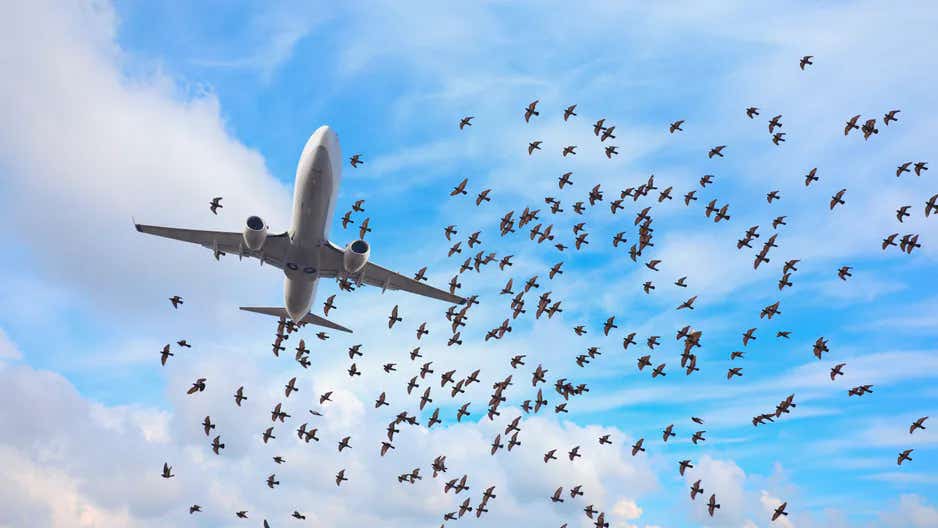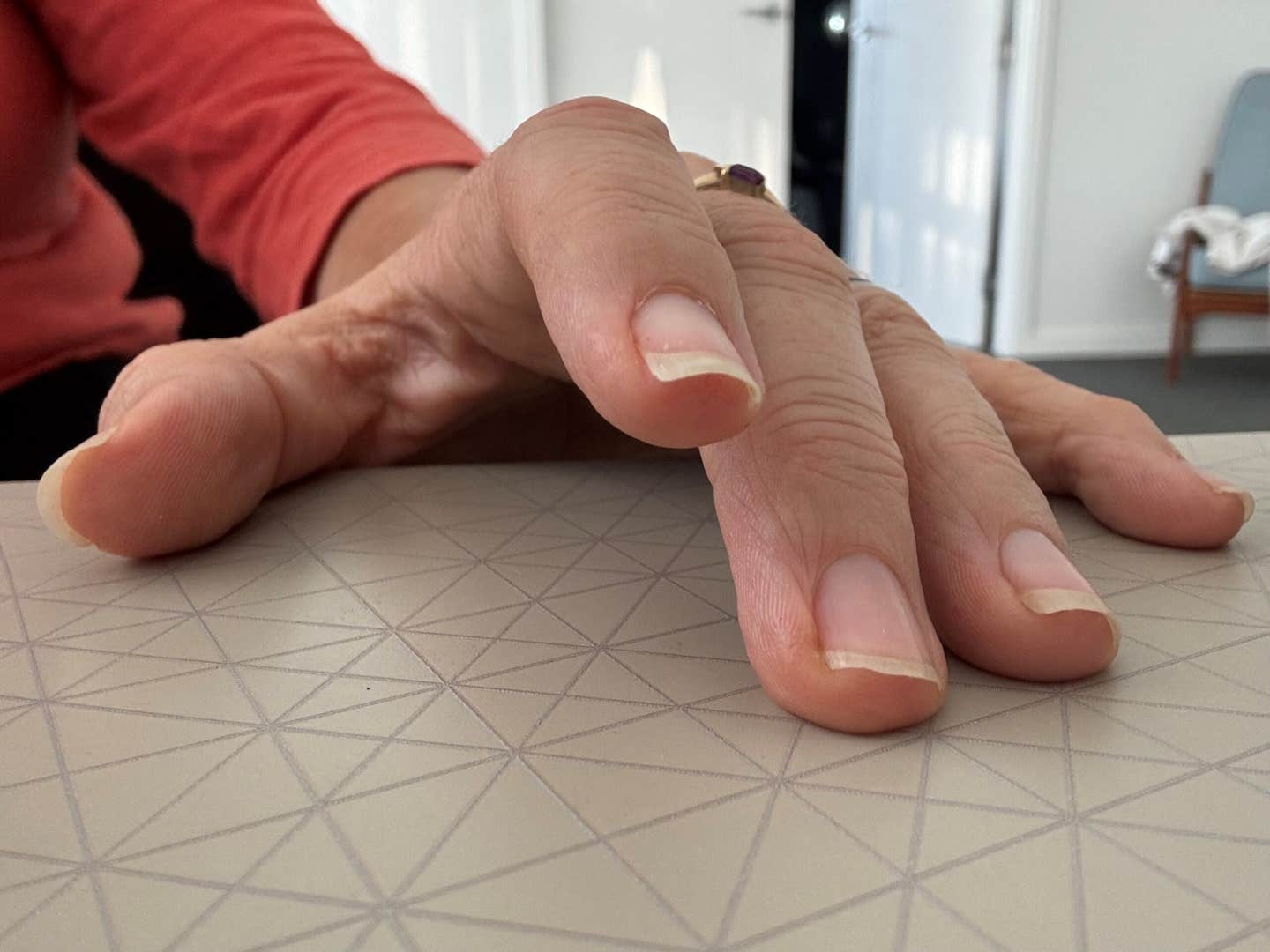Scientists Use Bird Feathers to Make Planes Safer
Taking cues from bird feathers, scientists designed wing flaps that boost lift, cut drag, and improve airplane control in real-world tests.

Inspired by bird feathers, engineers create flaps that improve aircraft flight, reduce stall, and offer aerodynamic stability. (CREDIT: Adobe Stock | Murat Erhan Okcu)
Birds have long been nature’s masters of flight. Their ability to glide, dive, and twist through the air with ease has fascinated both scientists and engineers. But there's more to bird flight than strong wings and hollow bones. One secret lies in their covert feathers—layers of small feathers that cover the wing’s base and shift during tricky maneuvers like landing or flying through gusty air.
For a long time, biologists knew that these covert feathers deployed passively, responding naturally to changes in airflow. But their exact purpose remained a mystery. Some suggested these feathers help control lift and stability, but no one had proven how—or if—their motion truly affects flight physics. That’s where a team of engineers stepped in, led by researchers at a university known for innovation in aerospace studies.
Cracking the Secret of Covert Feathers
Engineers at Princeton University designed flexible wing flaps inspired by covert feathers. They wanted to test whether adding more than one row—like birds naturally have—would offer extra benefits. Their goal: improve small aircraft flight and reduce stall without using extra power or heavy control systems.
Stall is a serious issue in aviation. It happens when airflow over the wing breaks down, usually when the plane climbs too steeply or slows too much. This causes a sudden drop in lift, making it hard for the aircraft to stay in the air. Pilots work hard to avoid stall, and any design feature that delays or reduces stall can make flying much safer.
The covert-inspired flaps were made to flip up in response to changing airflow. No motors. No external control. Just smart placement and design. “They’re essentially just flexible flaps that, when designed and placed properly, can greatly improve a plane’s performance and stability,” said Aimy Wissa, assistant professor of Mechanical and Aerospace Engineering, in the study published in the Proceedings of the National Academy of Sciences.
Discovering the Physics Behind the Feathers
To see how the flaps worked, the team ran detailed tests in a 30-foot-tall wind tunnel. There, they could simulate airflow over a 3D-printed model wing, complete with the covert-inspired flaps. The tunnel was fitted with sensors, lasers, and high-speed cameras. These tools gave precise measurements of pressure, speed, and airflow patterns around the wing.
Related Stories
As lead researcher Girguis Sedky explained, “The wind tunnel experiments give us really precise measurements for how air interacts with the wing and the flaps, and we can see what’s actually happening in terms of physics.”
Their tests revealed two distinct aerodynamic mechanisms. One was already known and is called the pressure dam effect. This happens when a flap near the back of the wing creates a low-pressure pocket that helps maintain lift. But more exciting was the discovery of a new mechanism: shear layer interaction.
This shear layer interaction occurs when a flap placed near the front of the wing disturbs the airflow just enough to delay the stall. This subtle change helps the air stay attached to the wing surface longer, which is key to stable flight.
More Rows, More Performance
The team didn't stop with just one flap. They added more, up to five rows, to study how the flaps interacted. What they found surprised even them. The benefits of the shear layer interaction stacked up. More flaps at the front meant better performance. In fact, the five-row setup improved lift by 45%, cut drag by 30%, and made the wing far more stable overall.
However, the pressure dam effect didn’t show the same pattern. Adding more flaps at the back didn’t give better results. Still, by combining both mechanisms—using front and rear flaps—they found a way to get the best of both worlds.
“The discovery of this new mechanism unlocked a secret behind why birds have these feathers near the front of the wings and how we can use these flaps for aircraft,” said Wissa. “Especially because we found that the more flaps you add to the front of the wing, the higher the performance benefit.”
Taking Flight in the Real World
After testing in the lab, the team wanted to see how the design worked in actual flight. They modified a small remote-controlled airplane, about the size of a bird, and equipped it with covert-inspired flaps. The aircraft also carried an onboard flight computer, which could stall the plane automatically during flight.
Tests were held at a field that used to be an airport, now part of the university’s Forrestal Campus. The plane flew under the guidance of drone pilot Nathaniel Simon, a graduate researcher in the team. He said seeing the flaps in action during stall tests was amazing. Just like in the wind tunnel, the flaps flipped up automatically and helped the plane recover from stall more smoothly.
“These flaps can both help the plane avoid stall and make it easier to regain control when stall does occur,” Wissa said.
Simon added, “It’s cool to be able to collaborate in the shared space at the Forrestal Campus, and to see how many areas of research this project touched.”
Lightweight, Cost-Effective, and Versatile
One of the key advantages of these flaps is how simple and low-cost they are. Since they rely only on the flow of air to work, there’s no need for extra electronics or power. “An easy and cost-effective way to drastically improve flight performance without additional power requirements,” Sedky called it.
Because the system doesn’t need power or weighty mechanisms, it's ideal for small aircraft like drones. But the technology might go further. The same airflow principles could be used to improve vehicles that move through water or other fluids.
“What we discovered about how coverts alter the airflow around the wing can be applied to other fluids and other bodies, making them applicable to cars, underwater vehicles, and even wind turbines,” said Sedky.
Blending Biology and Engineering
The results also caught the attention of biologists. By mimicking bird feathers, engineers gained insight into how birds control their flight. Wissa sees this as a two-way street. “That’s the power of bioinspired design,” she said. “The ability to transfer things from biology to engineering to improve our mechanical systems, but also use our engineering tools to answer questions about biology.”
With new tools and knowledge, biologists can now test fresh ideas about how birds use covert feathers during flight. Meanwhile, engineers continue to find better ways to build aircraft that fly with the same grace and control as a bird.
A New Flight Path Forward
This study shows how nature can inspire powerful ideas in design and technology. Something as small and often overlooked as a feather might be the key to making aircraft safer, more stable, and more efficient. As this team of researchers proved, small changes—when placed in just the right spots—can make a big difference.
Note: The article above provided above by The Brighter Side of News.
Like these kind of feel good stories? Get The Brighter Side of News' newsletter.
Mac Oliveau
Science & Technology Writer | AI and Robotics Reporter
Mac Oliveau is a Los Angeles–based science and technology journalist for The Brighter Side of News, an online publication focused on uplifting, transformative stories from around the globe. Passionate about spotlighting groundbreaking discoveries and innovations, Mac covers a broad spectrum of topics—from medical breakthroughs and artificial intelligence to green tech and archeology. With a talent for making complex science clear and compelling, they connect readers to the advancements shaping a brighter, more hopeful future.



